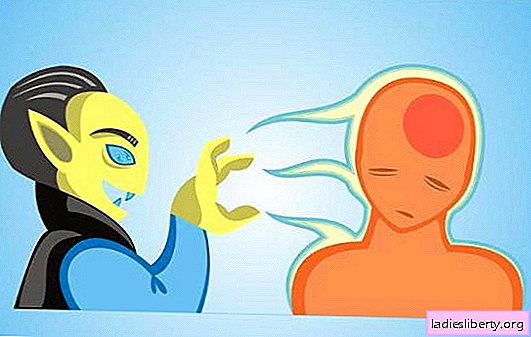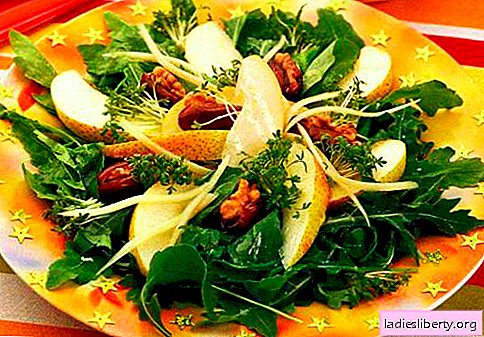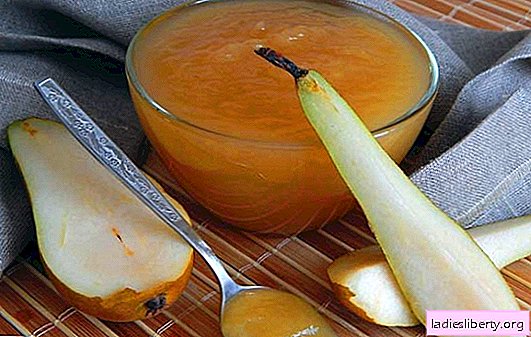
Many gardeners fell in love with Nasturtium as an ornamental plant. She has beautiful bright bell-shaped flowers. Alternative medicine lovers did not pass her attention either. She fell in love with folk healers due to its composition, in which there are a large number of vitamins and minerals. They use its terrestrial part to expand the vessels to improve the blood supply to the heart muscle.
The use of nasturtium
In the manufacture of infusions and decoctions of nasturtium, its dry stems, castings, flowers, as well as juice and dried seeds are used. Since the plant contains a large concentration of nutrients during the flowering period, it was at this time that it was cut and dried.
Flowers are harvested when they are fully bloomed. This is best done in the morning, as soon as the dew comes down. The leaves and stems are very juicy, so they are dried on cotton cloth or paper. Dry them in a warm, dry room. The ideal place would be an attic or a barn.
Prepared raw materials are stored in bags made of natural fabric or cardboard boxes. Shelf life is 1-1.5 years.
The fruits of nasturtium are used in cooking as a spice. If you add them to salads, it will help enrich your diet with many vitamins. Nutritionists recommend using nasturtium greens in salads for people with atherosclerosis and metabolic disorders.
Essential oils of the plant have found their application in cosmetology. And fresh juice will help to cope with dandruff and hair loss.
What helps nasturtium
Among lovers of traditional medicine, the plant is used to treat:
• Colds and lung diseases. In this case, infusion is used. For this, a tablespoon of the plant is poured with a glass of boiling water. After being allowed to stand for half an hour, filter. With a strong cough, the infusion is taken 70 grams three times a day.
• Diseases of the urinary tract. The upper part is dried and crushed. After a tablespoon of raw materials, pour half a liter of boiling water. After this mixture is placed in a water bath and boiled for a quarter of an hour. Filter the liquid after 45 minutes. Drink a decoction in a glass 3 times a day.
• Diseases of the heart and blood vessels. To prepare this infusion, 20 grams of finely ground leaves or flowers of a plant is poured with a glass of boiling water. After half an hour, the mixture is filtered. Use the infusion 3 times a day for a couple of tablespoons.
With coronary heart disease, they drink juice from fresh leaves and stems of the plant. It is drunk on a dessert spoon three times a day.
• Bronchitis. This disease, and especially in a chronic form, is treated with alcohol tincture. To do this, 2 tablespoons of raw material is poured into a glass of vodka. Insist her in a dark warm place for 2 weeks. The mixture must be shaken periodically. After 14 days, the tincture is filtered. Take it three times a day, 25 drops.
If you mix nasturtium leaves and alcohol in equal proportions, then such an alcohol tincture can be used as a blood purifier. When used in a teaspoon three times a day, you can get rid of boils and acne.
• Inflammatory diseases of the lymph nodes. To do this, 10 grams of leaves are poured liters of boiling water. After half an hour, filter and take 0.5 cups three times a day. It is worth noting that taking this infusion according to the specified scheme has a good laxative.
To strengthen the immune system, you can use her wine tincture. For its preparation, a liter jar is filled with plant leaves. After they fill them with dry white wine and put them in a dark place. After a couple of weeks, the tincture is filtered and taken three times a day before meals in a teaspoon.
With baby thrush, the oral cavity can be rinsed with a decoction of flowers with honey.
The use of nasturtium to improve the quality and growth of hair
Good nasturtium also helps with baldness. To do this, freshly picked leaves are passed through a meat grinder with a fine mesh, and the resulting slurry is squeezed through the fabric. The juice is rubbed every other day for 2 weeks. After they take a break for 10 days and repeat the course. For the season you need to conduct 3 two-week courses. When applying juice to the scalp, make sure that the liquid does not get into the eyes. It can provoke the development of inflammation.
An infusion of fruits, buds and leaves of nasturtium will also help strengthen hair. For this, a dry mixture, in an amount of 30 grams, is poured liters of boiling water and simmer in a water bath for about a quarter of an hour. After they let it brew for 45 minutes. After this time, the broth is filtered and a little water is added. It should turn out a liter of liquid. This broth is rubbed into the scalp 3-4 times a week.
From brittle hair, collecting from the roots of the cinquefoil and leaves of nasturtium will help. The same number of plants is taken and passed through a meat grinder. Then you should give the juice and add a little boiled water.
To prevent hair loss, you can strengthen the bulbs with lotion. You will need seeds, flowers and leaves of nasturtium, fresh nettle and boxwood leaves. They need to take 100 grams and pour 0.5 liters of alcohol. The lotion is insisted for 2 weeks, then filtered and added essential oils to it. It is applied to the scalp and rubbed with a stiff brush.
The healing properties of nasturtium
This plant is rich in vitamin C. Ascorbic acid in nasturtium is twice as much as in blackcurrant. Therefore, the plant is used for the prevention of various diseases and the complex treatment of scurvy. It has anti-inflammatory properties and gives a good diuretic effect. For this reason, in folk medicine, nasturtium is used to treat diseases of the kidneys and urinary tract.
It also contains provitamin A, sulfur, potassium, iodine and phosphorus. Retinol, thiamine and riboflavin are present in all parts of the plant. The leaves also contain vitamin E. Plant seeds are rich in oils and acids.
The healing properties of nasturtium include its bactericidal and insecticidal effects. Thanks to its many vitamins, it strengthens and supports the immune system.
There are many directions from which nasturtium helps. This includes the treatment of respiratory infections, help with asthma and emphysema, and the improvement of metabolism. It can cure some diseases of the oral cavity, such as stomatitis, candidiasis, gingivitis. Nasturtium will help men with impaired productive function and women during menopause.
Indications for use of nasturtium
Indications for use of nasturtium are:
• bronchitis;
• tonsillitis;
• tumors;
• anemia;
• atherosclerosis;
• coronary insufficiency.
It helps improve metabolism, reduces depression, anxiety and irritability.
Nasturtium seeds should be taken orally for acute and chronic inflammation of the urinary tract and impotence. If 0.6 grams of crushed seeds are mixed with a spoon of honey and taken before dinner, this will help relieve constipation. You shouldn’t get carried away with such a laxative, there is a high probability of digestive disruptions.
Indications for use of nasturtium juice
It is used both internally and externally. They are lubricated with warts, burns and polyps. Juice is also used in the treatment of scabies. If regularly applied to the scalp, then you can get rid of dandruff.
Inside, it is used for gout, rheumatism, coronary heart disease. It dilates blood vessels, helps with diseases of the liver and thyroid gland.
Take juice in a dessert spoon three times a day.
Contraindications to the use of nasturtium
You can not take it to people with gastritis and a stomach ulcer. But even if there are no contraindications to nasturtium, then before using it, you should definitely consult a doctor. Its use should take place under its strict control.
It is also necessary to monitor the dose of the plant. An overdose of it can lead to diarrhea, indigestion and vomiting.
Quite rarely, individual intolerance to the constituent substances is found.
Do not eat nasturtium flowers for diseases such as:
• Stomatitis. During this period, it can increase mucosal irritation.
• Cholelithiasis. It can provoke the exit of calculi into the bile ducts.
• Frequent heartburn. A high probability of developing reflux disease.
• Pregnancy and lactation. It can provoke an allergic reaction, in the first case in the mother, and in the second - in the child.
It is better not to use this plant in the treatment of infants. Up to 3 years, in young children, the intestines are not ready for new products, it does not fully absorb all the beneficial substances. Drinking nasturtium can lead to prolonged diarrhea.











